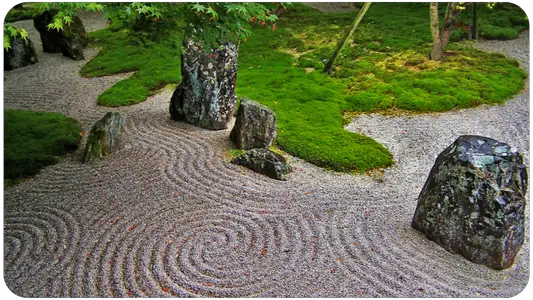Hinayana (Sanskrit हीनयान hīnayāna, "inferior vehicle") is a term of Mahayana Buddhism for all non-Mahayana streams of Buddhism. In one interpretation, Hinayana refers to the regional or philosophical traditions from which Mahayana is distinct.
In another interpretation (especially in Tibetan Buddhism), Hinayana can also refer to a particular system of training taught within Mahayana as a kind of preliminary stage.
According to a formal resolution of the World Fellowship of Buddhists in 1950, those traditions of Buddhism that consider themselves non-Mahayana should more correctly be referred to as Theravada.
Theravada is the oldest surviving school tradition from before the advent of Mahayana. Originally, there were as many as eighteen Buddhist schools of these; Sarvastivada is also another important school among them.
Origin and Meaning
Origin of Terms
The terms "Hinayana" and "Mahayana" derive from the Prajnaparamita Sutras (Sanskrit प्रज्नापारमिता prajnāpāramitā) ("The Sutras of Far-Reaching Discriminating Awareness, Sutras of the Perfection of Wisdom"). The sutras come from the Mahayana Buddhist tradition.
The name Hinayana thus came into use only with the emergence of Mahayana, in that the latter claimed to be "greater" (maha) or more comprehensive in its aims than the followers of the ancient wisdom school, who were therefore called "lesser" (hina).
In addition to being distinguished by the scope of religious objectives, the naming can also be understood in the context of the first schism of the Buddhist movement.
Buddhist Schism and Second Buddhist Council
The Vaibhashika and Sautrantika systems were Hinayana traditions in Sanskrit, whereas the Theravada system belonged to a Pali tradition.
In the second book of the Vinaya Pitaka, the Cullavagga, that incident is described in detail. Among other things, that it had taken place 100 years after the Parinibbana of the Buddha as well as that the cause were 10 "theses" of monks from Vesali, which offended against so far valid order right, whereby the main trigger was the controversy "handling money".
The canonical text does not confirm the assumption that the participating monks were supposed to write down the Buddha's teachings, which had been handed down orally until then, and bring them to a consensus. The consensus failed and the council split into two camps.
A large group from the traditionalist Theravada branch of the school split off, arguing that the strict Theravada rules of order should be relaxed. The monks who split off formed the majority and called themselves Mahasanghikas.
The two vehicles of Buddhism emerged, the schism was complete. The smaller vehicle (usually somewhat disdainfully called "Hinayana") was characterized by traditional disciplinary strictness and was accordingly considered very exclusive or elitist - it was only possible for a few people to submit to this strictness in order to find salvation.
The larger vehicle advocating said relaxation of rules was called Mahayana, the "Great Vehicle." Before the emergence of Mahayana, there were no collective terms for different schools due to lack of necessity. The term Hinayana, which arose after the schism, is still used despite its pejorative character.
In Mahayana, the term Śrāvakayāna (vehicle of the hearers) is also used instead of Hinayana.
Another school of Hinayana in the area of Mahayana (East Asia) that continues to exist today, although much changed and reduced, is the Vinaya school. It played an important role in the field of ordination and the transmission of traditional monastic rules.
In China it spread under the name Lü-zong, in Japanese it is called Risshū. In different periods (e.g. Nara period, Song dynasty) monks were expected to receive tradition transmission from this school.
Different Schools of Hinayana
The Hinayana included eighteen schools. The most important are the Sarvastivada and the Theravada. In Sarvastivada, there were two main systems based on philosophical differences: Vaibhashika and Sautrantika.
The Sarvāstivāda (Sanskrit सर्वास्तिवाद sarvāstivāda) is a branch belonging to the Sthaviravāda in early Indian Buddhism, which separated from the Vibhajjavada (Theravada) school after the Third Council of Pataliputta due to differences of opinion, such as over the understanding of Abhidharma. From the Sarvāstivāda emerged the Mahishasaka, Vatsiputriya, and Kashyapiya schools.
Theravada, the largest and only surviving lineage of Hinayana, is prevalent in Sri Lanka and continental Southeast Asia (Myanmar, Thailand, Laos, Cambodia, and to some extent Vietnam) and is the predominant school of Buddhism in these countries, and is therefore better referred to in scholarly circles as "Southern Buddhism." Sarvastivada was widespread in northern India.
An opinion held especially by Theravada Buddhists is the following: since of the earlier schools of Hinayana, Theravada alone survives, it seems reasonable to speak only of Theravada and Mahayana as the two major lineages of Buddhism.
In the historical context, however, this can be misleading, since other schools of Hinayana also existed. Of the schools of Hinayana that are no longer practiced today, the following are the most important: the Mahasanghika, the Pudgalavada, the Sarvastivada, and the Sautrantika.
The Hinayana doctrinal systems taken up at Indian monastic universities, such as Nalanda, and later by Tibetan Mahayanists, stem from these two schools. The lineage of transmission of monastic vows practiced in Tibet comes from another Sarvastivada subcategory, Mulasarvastivada.
The Term "Hinayana" in Tibetan Buddhism
In Buddhism in Tibet, the terms Hinayana and Mahayana are used exclusively in the sense of personal motivation for the enlightenment effort. They complementarily denote the practitioner's motivation to attain enlightenment for himself personally or for the benefit of all beings.
In Tibetan Buddhism, the attitude of Mahayana is considered desirable; Hinayana thus appears in part as a preliminary stage in which practitioners strive only for personal liberation, but are aware of the existence of, and can progress toward, perfection through bodhichitta as in Mahayana.
In ancient India, the distinction does not seem to have existed. According to the few traditions from Chinese and Tibetan sources (the Islamic and Hindu pushback against Buddhism left nothing in India itself, Buddhism was completely wiped out there), it is partly uncertain to make a classification.
According to Tibetan sources, in a very early council the Mahasanghika ('Great Sangha') and the Sthaviravadin ('Old Way') separated over the question of whether it was permissible to assume differences in the spiritual maturity of various arhats within the 'Great Sangha' or (as before) not (hence the names).
A total of 18 schools subsequently emerged, of which it is not always certain today to which of these two directions they belonged; there is also evidence that this difference appeared to be of little importance among Buddhists.
In any case, as a result of the extinction of Western and Indian Buddhism, only a subgroup of the Sthaviravadin (= Theravadin) survived, as well as a direction of the Mahasanghikas, namely the Prasanghika-Madhyamaka, who are responsible for all northern traditions (China and Tibet, respectively).





